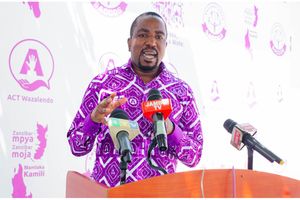OPINION: Will a Mega-Dar es Salaam also be a ‘Smart City’ come 2030?
Dar es Salaam is projected to become a megacity by 2030, only ten years from now. The United Nations defines a megacity as a city which has a population of at least ten million people. Currently, there are 37 megacities in the world, including Shanghai, Tokyo, Lagos, Kinshasa, and Mumbai. Today, it is a necessity for a megacity to also be a smart-city. How is Dar es Salaam prepared to become mega-smart?
The typical high populations of megacities come with many challenges that require innovative solutions to everyday problems – and that is where technology comes in. There are different perspectives on the meaning of a smart city. Some are more technology centric and others are more human focused.
IBM defines a smart city as one that makes optimal use of all the interconnected information available today to better understand and control its operations and optimize the use of limited resources.
Smart cities are also associated with ‘smart citizens’ – where citizens have the information they need to make informed choices about their lifestyle, work and travel options. Some people also associate smart cities with being “modern”.
Slums, crime, energy and material resources, homelessness, and traffic congestion are some of the challenges typical to megacities.
Expansion of road infrastructure, minimizing the use of private cars in commuting, and creation of more employment opportunities are some of the solutions to megacity challenges. The question then is; where is Dar es Salaam is now, and what needs to be done during this one decade as it transitions to a megacity?
The key challenge in becoming a megacity is to also become sustainable, efficient and effective.
This requires proper alignment of technology, data, people and organisational change. Organisational change here means having the required culture, skills and leadership.
Sustainability remains a challenge in many technology-based development initiatives due to high financial and skills dependence on donor agencies.
In that light, while donor support is important, local stakeholders must step up, collaborate and especially take the lead in steering the initiatives to prepare Dar es Salaam to become a mega and smart city.
Donors can provide a variety of support except the required organisational change and leadership to sustain initiatives. What then is the way forward?
Firstly, there is need, not only for knowledge capacity building, but also, and probably more important, leadership capacity building that will take ownership and champion initiatives for the long run. Each initiative must have local champions who are dedicated, knowledgeable and passionate to take the leading role.
Secondly, city offices need to operate like start-up companies. They need to develop, test and implement solutions throughout the city in a true bottom-up, citizen-driven approach.
There are many talented software developers and creative thinkers in the country. These must be sourced, synergized and empowered to take the wheel in transforming Dar es Salaam to a truly sustainable and effective city.
Thirdly, city leadership must have a vision of where they would like to see the city in five or ten years.
This means that the city leadership need more tech-savvies; people who have their finger on the pulse of current technology trends, tech leaders, and less politicians.
A sustainable future of any development program demands digital development leaders and champions.
The initiatives in making Dar es Salaam a smart city are no exception. The digital development leaders and champions need to be local people who are planted at all levels, from the grassroots to the ministries.




